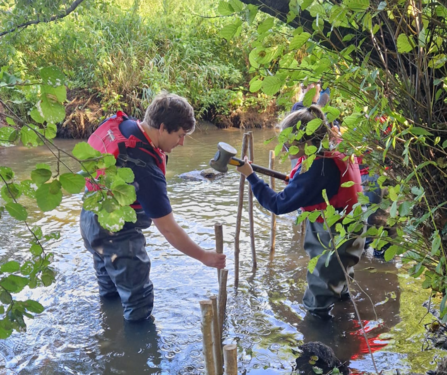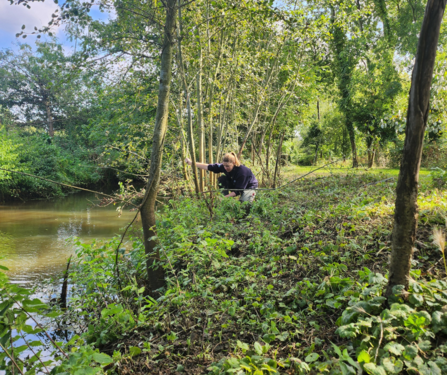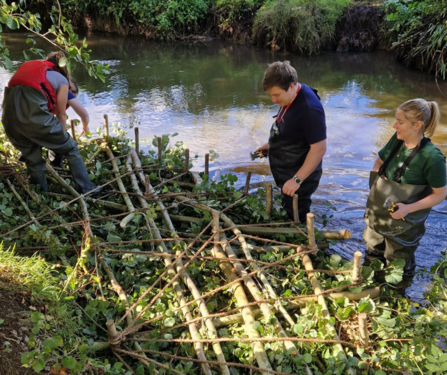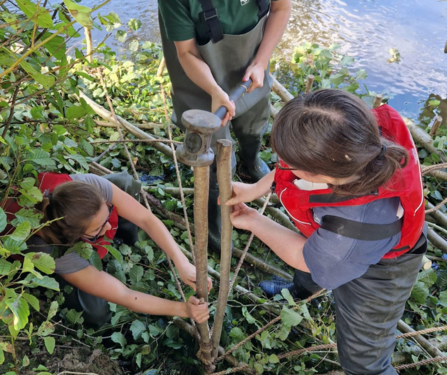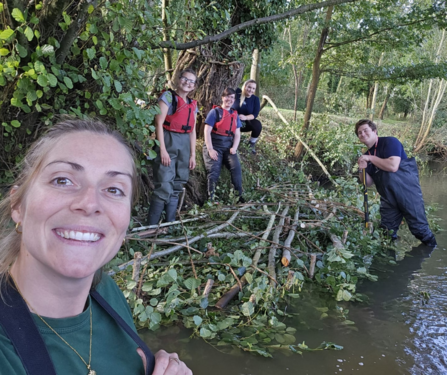On one of the brighter September days, the Surrey Wildlife Trust Nature-based Solutions team donned their waders and joined Wetlands Officer Josh Bowes to create a berm along the Chertsey Bourne. The team were excited to get stuck into this aspect of the project, which has now been running for a number of years. The initiative has resulted in improvements for wildlife and greater habitat diversity within the stream.
For a few members of the team, it was their first experience of undertaking a river restoration project, and was a great opportunity to understand more about river processes and the important role rivers play in a healthy ecosystem. Upon arrival we were treated to a tour of the previously completed restoration works, and saw examples of berms, deflectors and gravels, and impact they can have. This project is now in its second phase, with a third phase currently in development.
A brash berm, in this case, is essentially a bend (meander) in the river which is made from woody off cuttings. The berm has many purposes, including encouraging water to flow at different rates, introducing diversity to the stream, helping to trap silt and sediment - reducing the flow of materials – and providing an additional habitat for marginal plants. It’s also a haven for smaller fish, helping to avoid predation, and as vegetation grows on the berm, further habitats will be established.
Once we had our waders and life vests on, it was time to enter the water! In case of emergency, it’s important for someone to stay on the riverbank at all times with a throw rope at the ready. We marked out the size of the berm using pre-cut stakes to make sure the berm was big enough to make an impact on the stream, but also an achievable task to be completed in one day.


